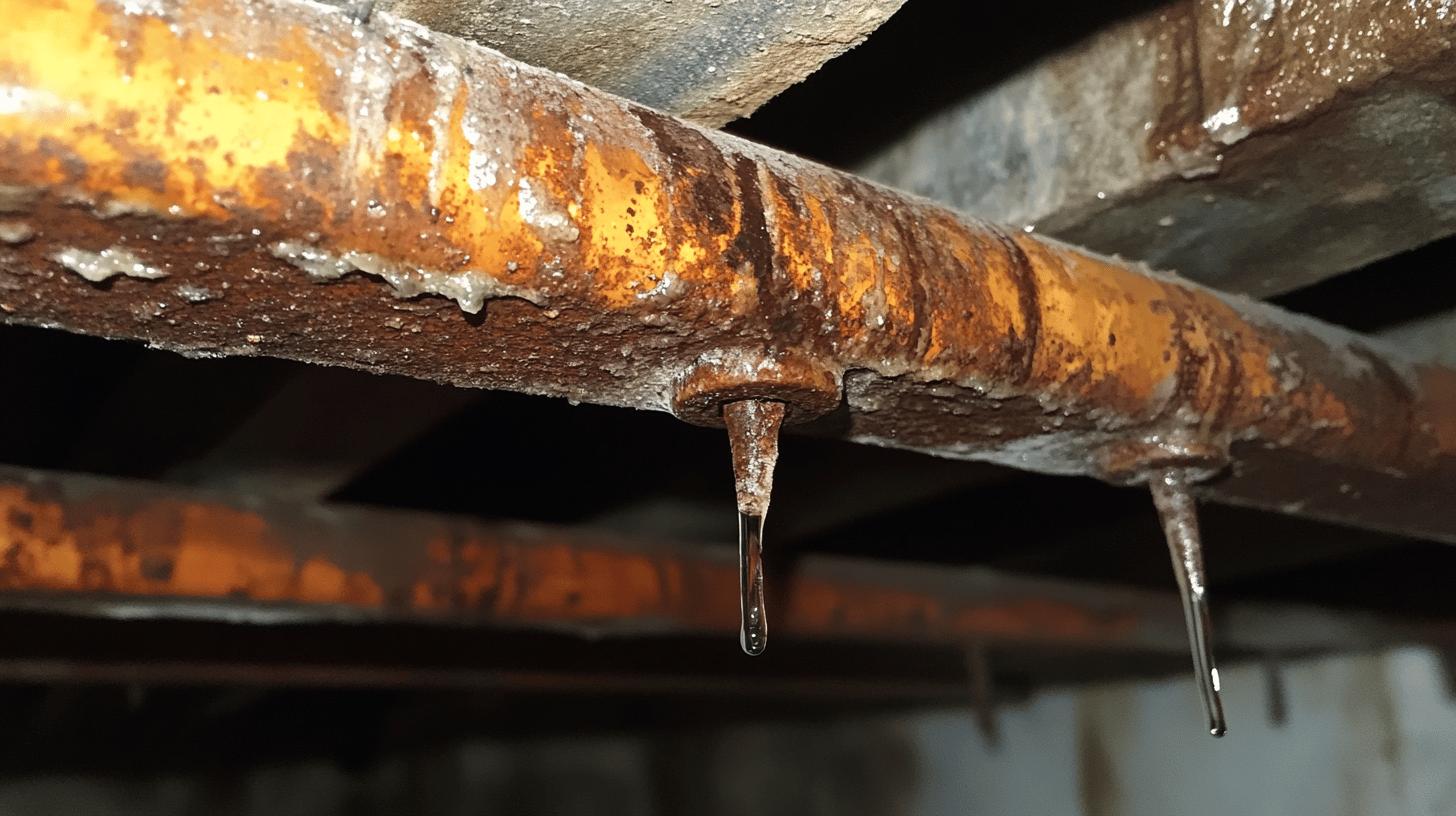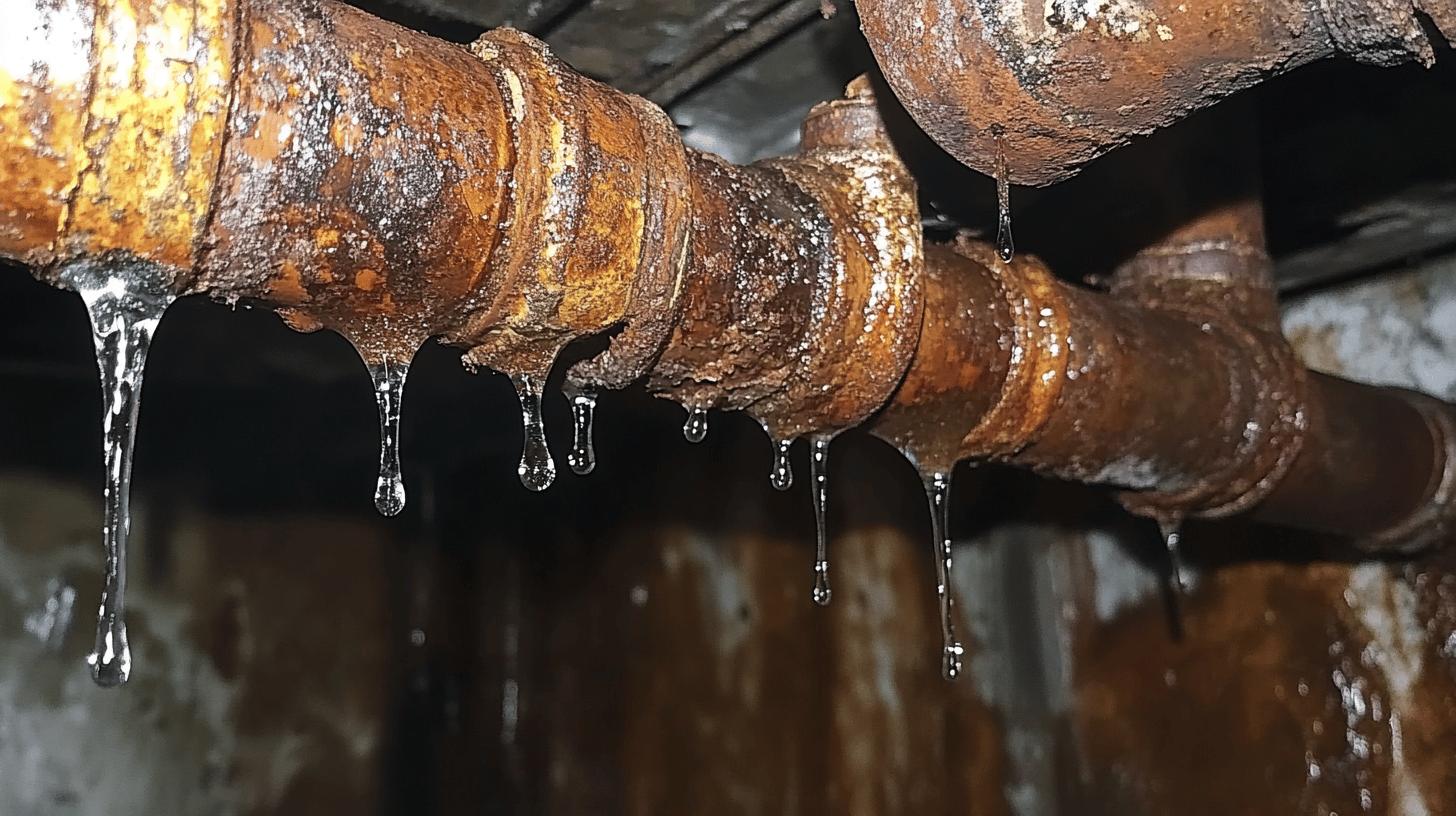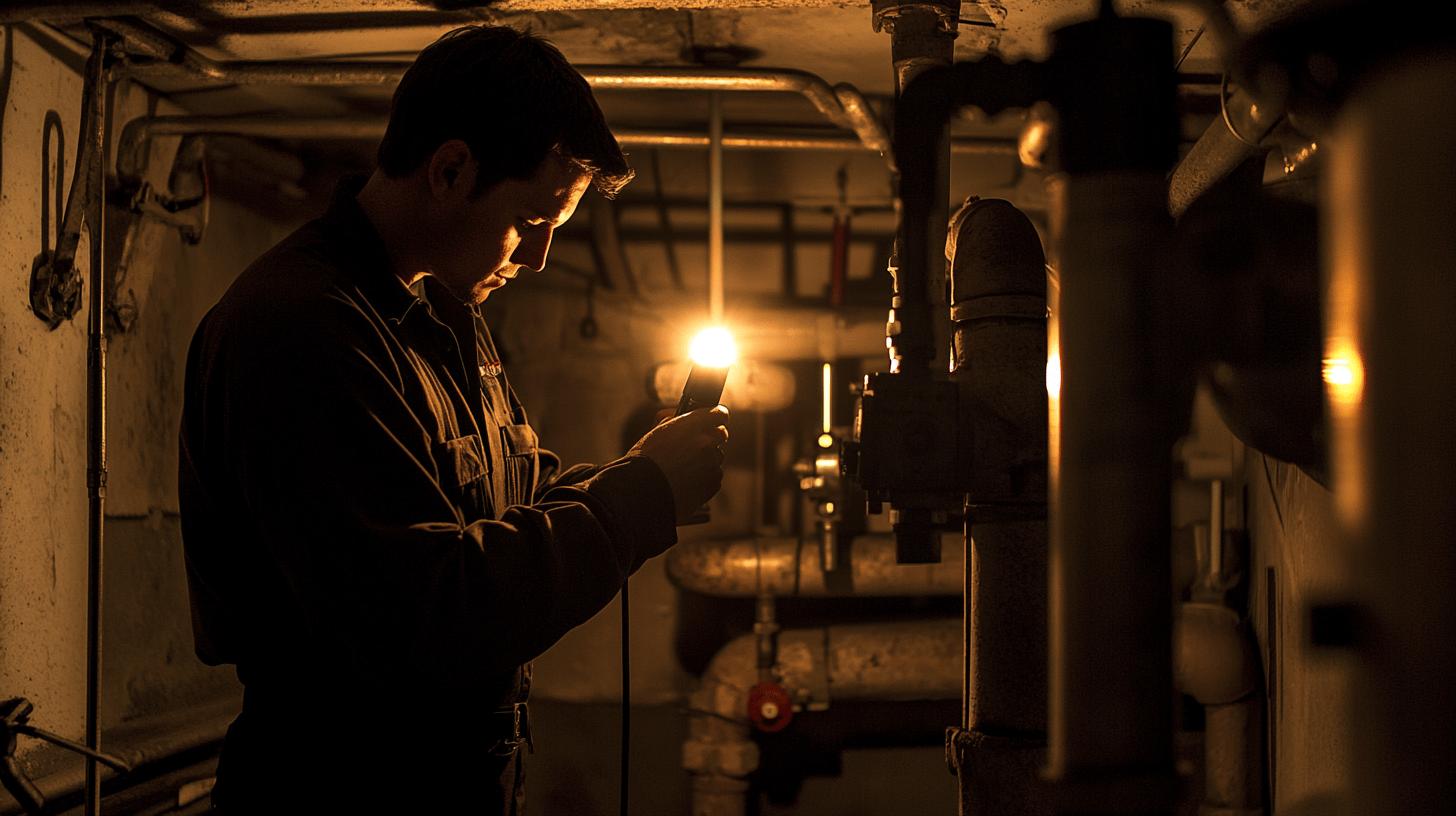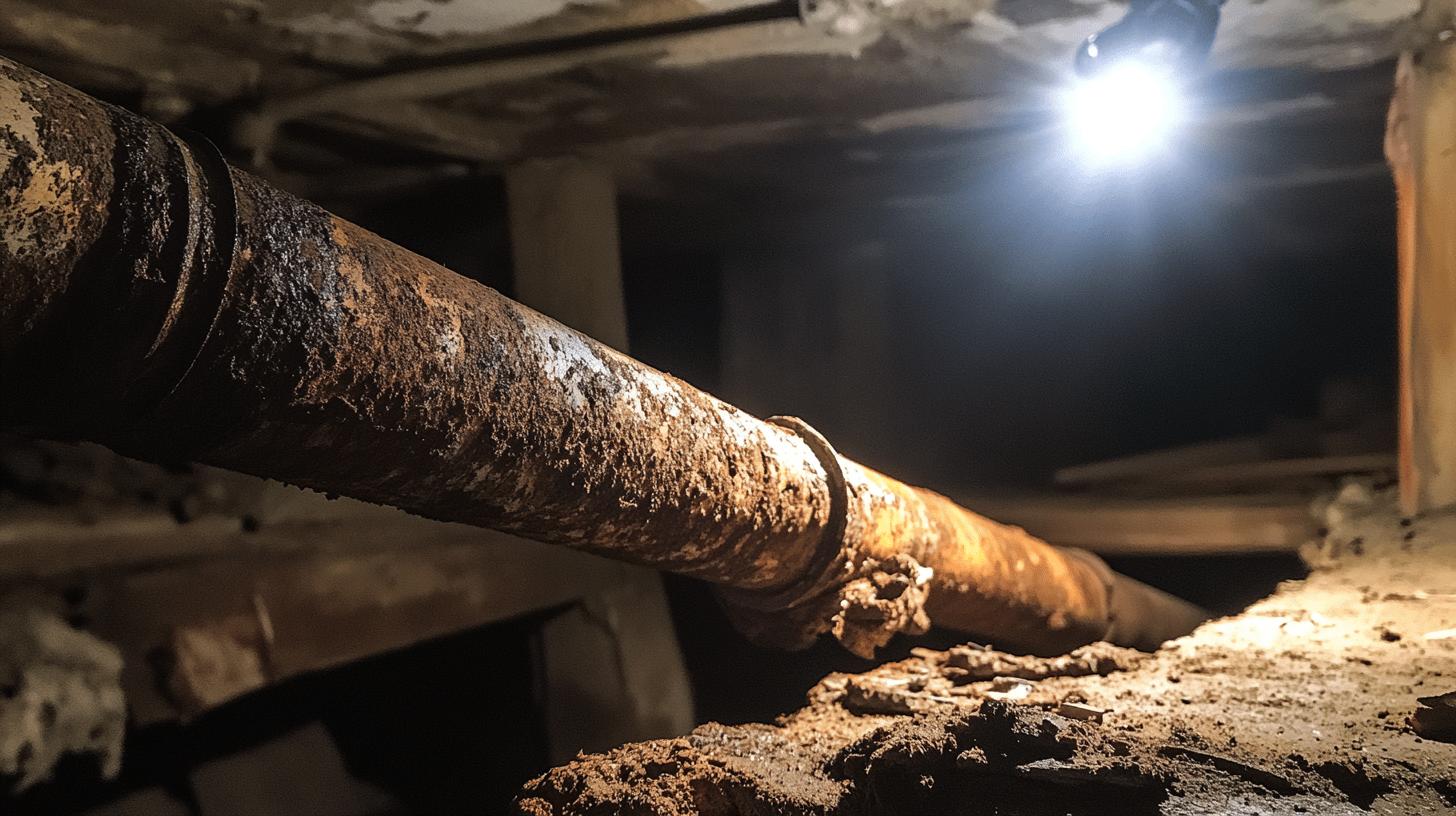TL;DR:
-
Common pipe materials and lifespans:
- Copper: 70-80 years
- Brass: 80-100 years
- Galvanized steel: 80-100 years
- PVC: 25-40 years
-
Signs for replacement:
- Persistent leaks
- Water discoloration
- Reduced water pressure
- Strange noises
- Visible corrosion
-
Factors affecting longevity:
-
Hard water accelerates corrosion
-
Soil conditions stress pipes
-
Temperature fluctuations cause damage
-
Replacement costs:
- Full house: $8,000-$15,000
- Partial: $1,500-$5,000
- Individual section: $500-$2,000
-
Maintenance tips:
- Schedule inspections
- Use water softeners
- Insulate pipes
- Fix leaks promptly
Have you ever thought about how the stuff inside your walls can affect your home’s safety? Swapping out old or broken pipes is super important—not just for convenience, but also for keeping your home safe. Different plumbing materials last different amounts of time. For example, copper pipes can last up to 80 years, while PVC ones usually only last about 40. Knowing when to replace them can save you from expensive repairs and help keep your home safe. As we look into how long different pipes last and what warning signs to watch for, you’ll learn how to protect what really matters.
Understanding the Lifespan of Common Pipe Materials
Understanding how long your home’s pipes last is important for safety and efficiency. Different materials have different lifespans, which affects when they need to be replaced. Older pipes are more likely to leak or cause problems, leading to water damage and expensive repairs. By knowing how long each type lasts, you can plan for replacements and avoid surprise plumbing emergencies.
- Copper pipes: Usually last 70 to 80 years.
- Brass pipes: Can last 80 to 100 years.
- Galvanized steel pipes: Also last 80 to 100 years.
- PVC pipes: Typically last 25 to 40 years.
The material you pick for your pipes really impacts how long they’ll last. For example, galvanized steel can rust over time, leading to clogs. On the other hand, PVC pipes are cheaper but can become brittle because of environmental factors. Choosing the right material based on your home’s needs and conditions can help make your plumbing system last longer.
Signs It’s Time to Replace Your Home’s Pipes

Spotting pipe issues early is super important to avoid major damage and costly repairs. Knowing when your pipes need help can prevent emergencies and keep your home safe. Keep an eye out for signs like leaks and discolored water to reduce the risks from old or damaged pipes.
| Sign | Description |
|———————-|—————————————————————————–|
| Persistent leaks | Continuous water leakage unsolved by simple repairs. |
| Water discoloration | Yellow, red, or brown water indicating potential rust or sediment buildup. |
| Reduced water pressure| Noticeable drop in water flow, possibly due to clogs or leaks. |
| Strange noises | Unusual sounds like rattling or clanging when using water. |
| Visible corrosion | Signs of rust or flaking on exposed pipes. |
If you ignore these signs, you could end up with burst pipes, water damage, and structural problems. Constant leaks waste water and drive up your bills. Discolored water can mean rust or sediment buildup, which might clog pipes and cause them to burst. Low water pressure might point to hidden leaks or blockages, while strange noises could mean loose pipes or trapped air, which can weaken them. If you see corrosion, that’s a sign your pipes are deteriorating and may need to be replaced soon. It’s important to address these issues early to keep your home safe and avoid expensive repairs.
Factors Affecting the Longevity of Plumbing Systems
External factors play a big role in how long your pipes last. One key factor is water quality; hard water has a lot of minerals that can speed up corrosion and lead to sediment buildup, which can block pipes and weaken them. Environmental conditions, like the type of soil and temperature changes, also matter. Shifting soil can put stress on pipes, and extreme temperatures can cause cracks. Knowing how these factors affect your plumbing can help you keep your system reliable and plan for timely replacements.
- Hard water speeds up corrosion and mineral buildup.
- Soil conditions like shifting exert stress on pipes.
- Temperature fluctuations cause expansion and contraction.
- Pipe material impacts susceptibility to environmental factors.
- Regular inspections can spot early damage or wear.
Understanding these factors helps homeowners make smart decisions about maintenance and replacement. Regularly inspecting your plumbing can help you spot early signs of wear, like mineral buildup or stress fractures. Choosing the right materials for your environment can also extend the lifespan of your pipes. By being aware of these influences, you can take proactive steps to keep your plumbing system safe and efficient for years to come.
The Cost of Replacing Plumbing Pipes

The cost of replacing plumbing pipes in your home can vary a lot. The main factors to consider are the type of pipe material and the cost of labor. Copper pipes are strong and long-lasting but tend to be more expensive, while PVC pipes are cheaper and don’t last as long. Labor costs can change based on how complex the job is, how easy it is to access the pipes, and where you live. Whether you’re doing a complete re-pipe of your house or just replacing a section will also affect the total cost. Understanding these factors will help you budget for any future pipe replacements.
- Full house re-piping: Usually $8,000 to $15,000.
- Partial replacement: Costs from $1,500 to $5,000.
- Individual section replacement: Around $500 to $2,000.
- Material-specific costs: Copper is pricier than PVC.
Hiring a professional plumber to replace your pipes is the best way to ensure everything is done right and efficiently. They have the expertise and tools needed to reduce the chances of future leaks. While DIY might look like a cheaper option, it can lead to costly mistakes. Choosing a trustworthy plumber guarantees quality work, which can extend the lifespan of your plumbing and save you from unexpected repair costs down the line.
Practical Tips for Extending the Life of Your Pipes
Routine maintenance is crucial for making your plumbing system last longer. Regular inspections can spot potential issues like leaks or corrosion before they escalate into bigger problems. Fixing leaks not only saves water but also cuts down on your bills. If you live in a hard-water area, using water softeners can help reduce mineral buildup and corrosion. Don’t forget to insulate your pipes, especially in cold areas, to prevent them from freezing and bursting. These proactive measures will keep your plumbing system working efficiently for years to come.
- Schedule inspections to spot issues early.
- Use water softeners for hard water.
- Insulate pipes to avoid freezing and bursts.
- Fix leaks immediately to prevent damage and waste.
- Track your plumbing system’s age and material for timely replacements.
These practices help you avoid expensive repairs and prolong the life of your pipes. Regular maintenance keeps your plumbing system safe and efficient, which can also boost your home’s value. By being proactive, you can prevent emergency plumbing issues, ensuring a dependable and safe water supply for years to come.
When to Call a Professional Plumber

Regular professional plumbing inspections can save you from expensive repairs. It’s a good idea to have your system checked every few years to catch any early signs of wear or problems. These proactive inspections can extend your plumbing system’s lifespan and keep your home safe. A trained professional can spot minor leaks or corrosion before they turn into major damage.
Some issues definitely require a plumber. If you notice persistent leaks, ongoing discoloration, or unexplained drops in water pressure, it’s a sign of serious problems. Noises like rattling or banging could mean loose fittings or trapped air. And if you see visible corrosion or smell sewage, you need to call for help right away. A professional plumber can address these issues, preventing bigger problems and making sure repairs are done right.
Final Words
Knowing when and how often to replace your home’s pipes is key to keeping your plumbing system running smoothly and avoiding big problems later. Different materials, like copper and PVC, last for different lengths of time, and their lifespan can be affected by things like water quality and the environment around them.
It’s important to catch signs of aging pipes early, such as leaks or discolored water, and consider getting professional help for replacements. By sticking to a regular maintenance schedule, you can prolong your pipes’ lifespan and save money on costly repairs down the road.
FAQ
How often should pipes be replaced in a house?
The frequency of pipe replacement depends on the material. Copper pipes may last 70-80 years, while PVC pipes typically last 25-40 years. Signs of wear or damage indicate it’s time for replacement.
What is the cost of replacing plumbing in an old house?
Replacing plumbing can range from $1,500 to $15,000 depending on the materials, extent of work, and labor costs. Professional assessment ensures accurate cost estimation and quality work.
How do I know if my copper pipes need replacing?
Signs your pipes need replacing include discolored water, persistent leaks, and reduced water pressure. Visible corrosion on copper pipes also indicates replacement may be necessary.
What is the lifespan of PEX pipes?
PEX pipes generally last around 40-50 years. Their lifespan can vary based on water quality and environmental conditions.
How long do copper and PVC pipes last?
Copper pipes can last 70-80 years, while PVC pipes typically last 25-40 years. Copper is durable but can corrode; PVC is more susceptible to environmental damage.
How do you identify if pipes in a house are old?
You can identify old pipes by looking for discoloration, leaks, low water pressure, and odd noises. Professional inspection can confirm their age and condition.
How often should PVC pipes be replaced?
PVC pipes usually need replacement every 25-40 years. Their lifespan varies due to environmental exposure and water quality factors. Signs of cracking or deterioration indicate a need for replacement.

